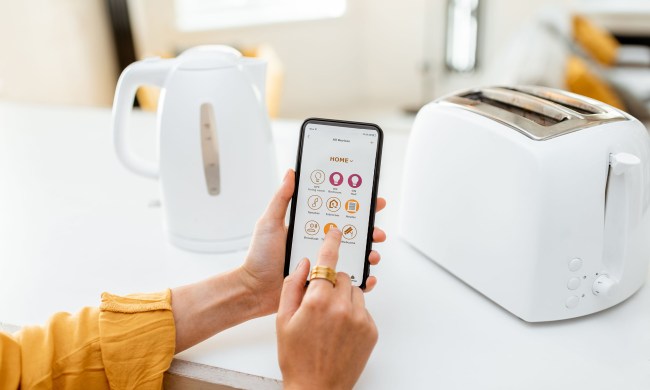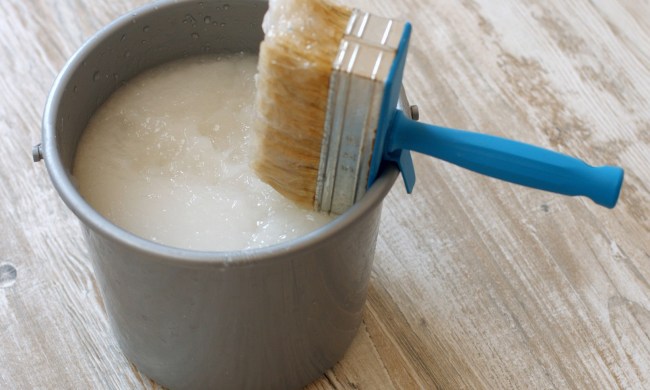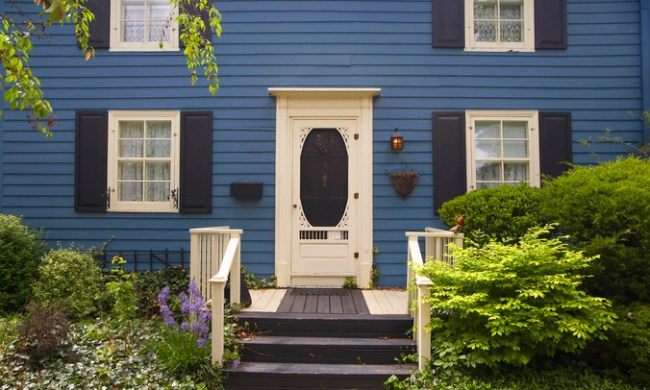Reliable home security doesn’t have to break the bank. Current technology makes security cameras, motion sensors, communication hubs, and mobile apps more accessible than ever. If you’re looking for a new and affordable way to keep an eye on the home while you’re away, these DIY home security systems are worth a look.
Good: Kangaroo Front Door Security Kit
The Kangaroo Front Door Security Kit with professional monitoring includes a doorbell camera, two motion/entry sensors, a siren/keypad, two Roo tags (keys to arm and disarm the system), a yard sign, five window decals, and a year of paid-up professional monitoring. The Kangaroo mobile app is included so you can monitor on the go, and the system is voice control compatible with Amazon Alexa and Google Assistant.
Kangaroo security devices use WiFi connectivity to communicate with the Kangaroo security app, and the wireless installation is fast and easy. One of the monitoring options, the Porch Plan ($1.99 per month, billed annually) covers all doorbell cameras at your location, includes 365 days of cloud storage, and reimburses up to two package theft claims of up to $150 each. Under the Kangaroo Complete Plan ($8.25 per month, billed annually), you get 24/7 monitoring of all devices with 365 days of included cloud storage for all doorbell cameras and 30 days of storage for any added privacy cameras, additional premium camera features, text and call notifications, and more.
Pros
- Affordable equipment
- Mobile app access is included in the purchase of equipment.
- Low-cost professional monitoring packages
- Easily expandable
Cons
- Few equipment options
- Limited smart home functionality
Better: Abode Iota All In One Kit
The Abode Iota All-In-One Kit includes a base station with a built-in security camera, motion and ambient light sensors, a siren, two-way audio, one door/window sensor, and a key fob. The camera boasts 1080p resolution and a 157-degree field of view. It can even see in the dark with infrared LED night vision. For broader capability, the base unit easily connects to dozens of security and environmental sensors and smart home devices. With this system, you can connect up to 160 Adobe or third-party devices and integrate them with Apple HomeKit, Amazon Alexa, and Google Assistant voice commands.
While you can self-monitor, Adobe also offers a variety of professional monitoring plans. The Pro Plan ($200 per year) comes with professional monitoring, premium support, cellular backup, and 30 days of timeline video. If you only need occasional pro monitoring while you’re out of town, you can purchase on-demand monitoring for three days ($8) or seven days ($15) at a time.
Pros
- Fast, easy setup
- Easily expandable
- Integrates with a wide range of Abode and third-party equipment
- Offers a variety of short- and long-term professional monitoring plans
Cons
- Base package only monitors one room plus another window/door
- Add-on components are more expensive than other systems
Best: SimpliSafe Haven
SimpliSafe’s top-of-the-line Haven package features 14 hardware components, including the base station, a wireless keypad, a keychain remote, two motion sensors, four window/door entry sensors, a panic button, a siren, smoke and carbon monoxide detectors, water and freeze sensors, plus a SimpliSafe yard sign and window decals. If you want to add a video doorbell, indoor and outdoor security cameras, or a smart door lock, the system is easily expandable. The system also integrates with Amazon Alexa, Google Home, and Nest.
Wireless connectivity and toolless installation make DIY setup quick and easy, but professional installation is also available ($79). Standard professional monitoring ($14.99 per month) comes with 24/7 coverage and access to the Online Dashboard to view the system. With the Interactive monitoring plan ($24.99 per month), you can use the mobile app to arm or disarm the system, receive SMS and email alerts, and gain access to more functionality with the Online Dashboard.
Pros
- Affordable 14-piece hardware package
- Competitive professional monitoring fee
- No long term contracts
- Wireless WiFi and cellular connectivity
Cons
- Limited smart home capability
Regardless of your budget, there’s a home security system that can give you and your family peace of mind. All three of these options have their benefits, so now you just have to choose the right one for you.



